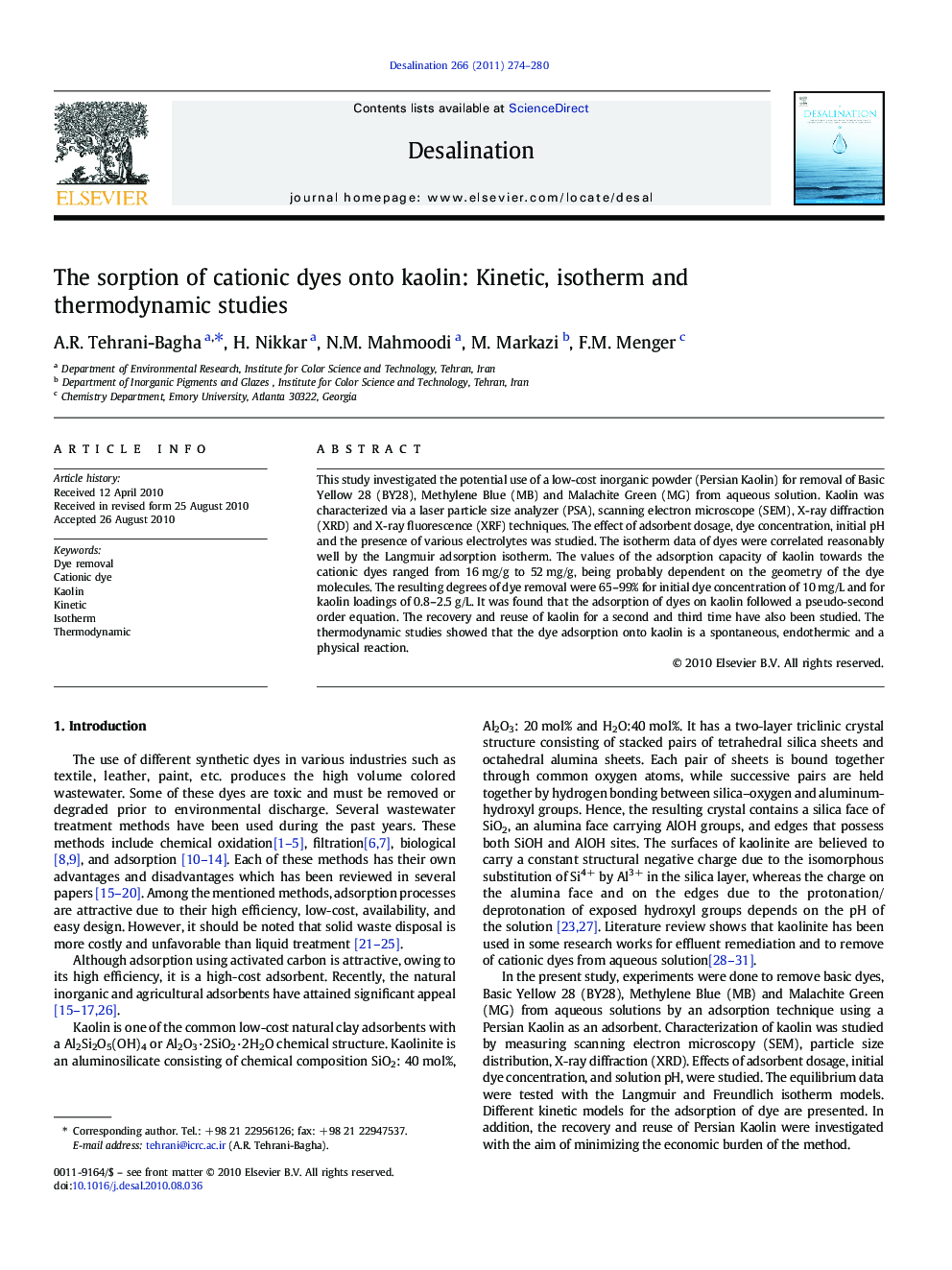| Article ID | Journal | Published Year | Pages | File Type |
|---|---|---|---|---|
| 625634 | Desalination | 2011 | 7 Pages |
This study investigated the potential use of a low-cost inorganic powder (Persian Kaolin) for removal of Basic Yellow 28 (BY28), Methylene Blue (MB) and Malachite Green (MG) from aqueous solution. Kaolin was characterized via a laser particle size analyzer (PSA), scanning electron microscope (SEM), X-ray diffraction (XRD) and X-ray fluorescence (XRF) techniques. The effect of adsorbent dosage, dye concentration, initial pH and the presence of various electrolytes was studied. The isotherm data of dyes were correlated reasonably well by the Langmuir adsorption isotherm. The values of the adsorption capacity of kaolin towards the cationic dyes ranged from 16 mg/g to 52 mg/g, being probably dependent on the geometry of the dye molecules. The resulting degrees of dye removal were 65–99% for initial dye concentration of 10 mg/L and for kaolin loadings of 0.8–2.5 g/L. It was found that the adsorption of dyes on kaolin followed a pseudo-second order equation. The recovery and reuse of kaolin for a second and third time have also been studied. The thermodynamic studies showed that the dye adsorption onto kaolin is a spontaneous, endothermic and a physical reaction.
Research Highlights► Adsorption of cationic dyes on kaolin is fast and relatively high. ► Dye adsorption on kaolin increases with the increase of pH up to 7 and then it gradually decreases. ► The presence of electrolytes increases the dye removal efficiency. ► The adsorption process obeys the Langmuir isotherm and a pseudo-second order kinetic model. ► The dye adsorption onto kaolin is a spontaneous, endothermic and physical reaction.
